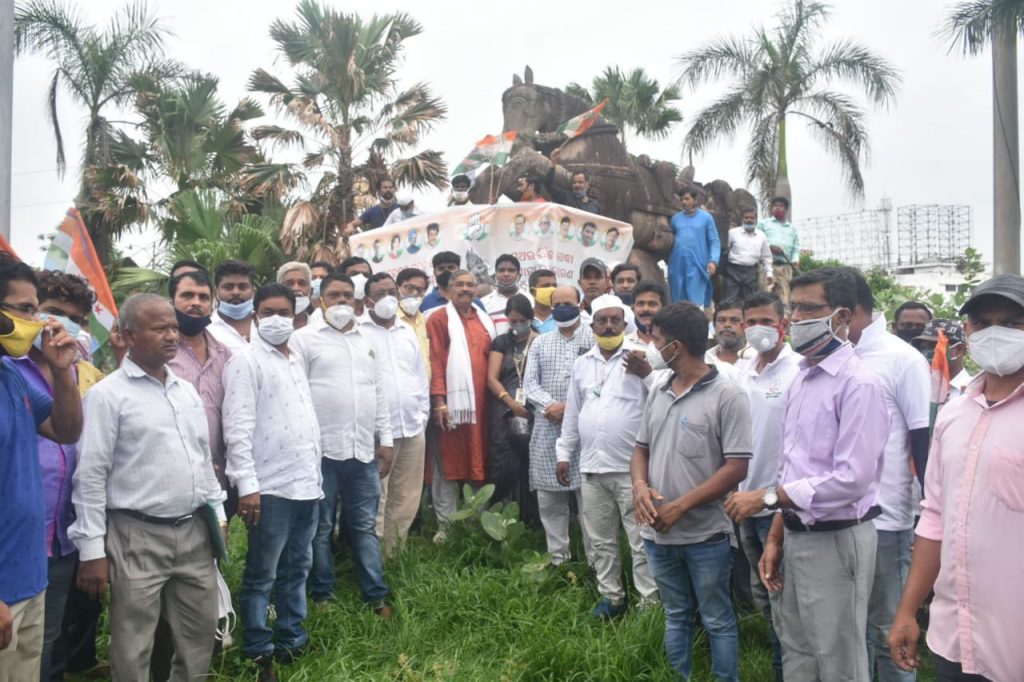Dr. Panchanan Dalai
Bhubaneswar, besides being the capital city of Odisha and one of India’s smart cities, has been a city of historical importance due to its temples, architectures and urban planning. The historically sacred geographies in its vicinity and the urbane architectures inside the city are sculptural and architectural wonders for everybody’s eyes – residents, migrants and daily foot fallers. Such beauties, historical and modern, justify the etymological significance of ‘Bhubaneswar’- ‘God of the universe’.
It is shocking, therefore, to notice how terrible beauties are born, almost on a daily basis, in such an abode of art and aesthetics – the latest one being the decision to shift the ‘Warrior-Horse’ monument to another corner of the city. For every Odia, this stony wonder is a no Trojan horse, but a magnificent repository that proudly harbours glorious history, racial magnificence and cultural distinctiveness of Odisha. It is a jewel on Bhubaneswar’s neck, which is too precious to fiddle with. For the visitors, it is the guiding star to the city’s topography; for the departing guests, it is a haunting host who is difficult to be removed from their heart and mind; for the residents, it is of an insurmountable cultural pride and memory that every sunrise kindles in them. It is, therefore, repugnant to the nature and art of urban planning to think of shifting such a monumental wonder to a new and alien place. I wish the poor horse could protest against such decision of the metro-men!
Great writers like William Hazlitt said ‘Art’ is immortal, but human lives are not. However, life can be made immortal, if we model our lives as per the virtues of art and aesthetics. That is why Leonardo da Vinci is as immortal as his ‘Monalisa’. City planners thinking of concrete-beautification of a city should learn that real beauty is born in the hands of artists, not of engineers. They should also learn that to shift the horse monument from its original place to another is like shifting a line on Monalisa’s lips.
Similarly, a city can be immortal not because of able administration or bureaucracy, but because of its respect to the history, integrity and dignity of its people and culture enshrined in their marvels and monuments. City stories of Athens and Sparta have imposed more prominence on Hellenism than Hebraism. English dramatist Oscar Wilde, a vehement critic of Karl Marx’s egalitarianism, observed that millionaires cannot take care of culture. I think he would have reiterated this, had he heard that an over-bridge is being considered more valuable than a marvelous work of art. A bridge at the cost of a beauty is snobbery of city planning, which is no less deplorable than any other snobbery that has inflicted our metro mentality.
Read what Joseph Addison had to warn England against in eighteenth century, when England was gradually shaping into a planned city – “As a foreigner is very apt to conceive an idea of the ignorance or politeness of a nation from the turn of their public monuments and inscriptions, they should be submitted to the perusal of men of learning and genius.” I think the Warrior-Horse in the city of Bhubaneswar is one such monument of Odia antiquity and achievements. Let us not be ignoble, therefore, to shift and tamper with its original habitation. Many ideas, histories, memories and prides would be lost with every shovel-full of soils you will dig out to uproot and shift it, irrespective of utmost engineering care. Five hundred years ago, Shakespeare, envisioning the mischief of grave robbers, pleaded in his epitaph not to tamper with his grave: “Good friend, for Jesus’ sake forbear, to dig the dust enclosed here. Blessed be the man that spares these stones, and cursed be he that moves my bones.”I think Fakir Mohan Senapati and Rabindranath Tagore too were wise enough to leave the city spaces and retreat to the idyllic places such as Santi Kanan (Balasore) and Santiniketan (Birbhum). Otherwise, they would have had to face the bulldozers to be uprooted and shifted like the Warrior-Horse.
It is ironic that before forgetting the sad demise of Padma Vibhushan Raghunath Mohapatra, Odisha has to witness an imminent threat to the maestro’s signature art in the form of the ‘Warrior-Horse’ currently installed at the Master Canteen Square in Bhubaneswar.
The writer is Associate Professor, Department of English, Faculty of Arts, Banaras Hindu University.
